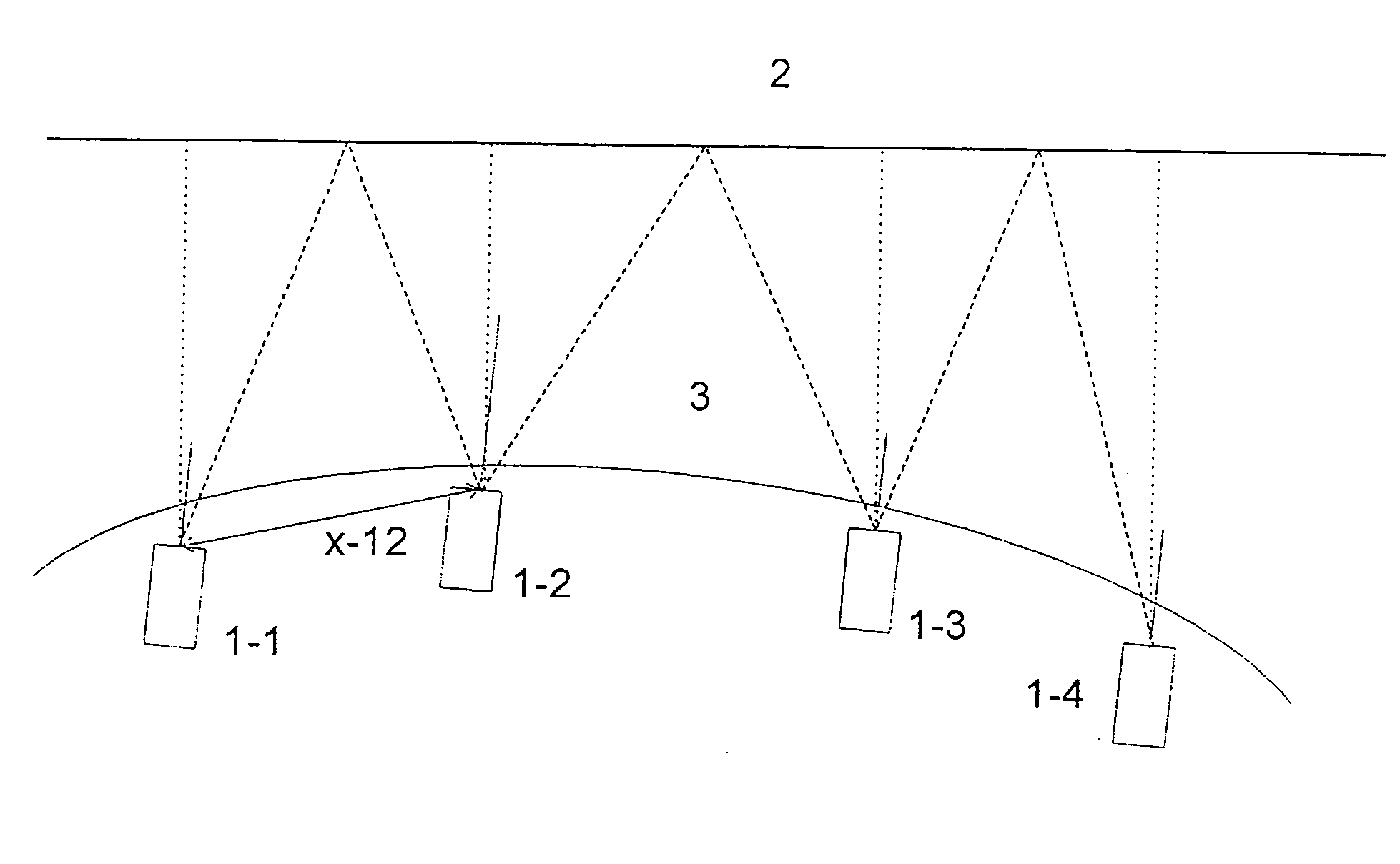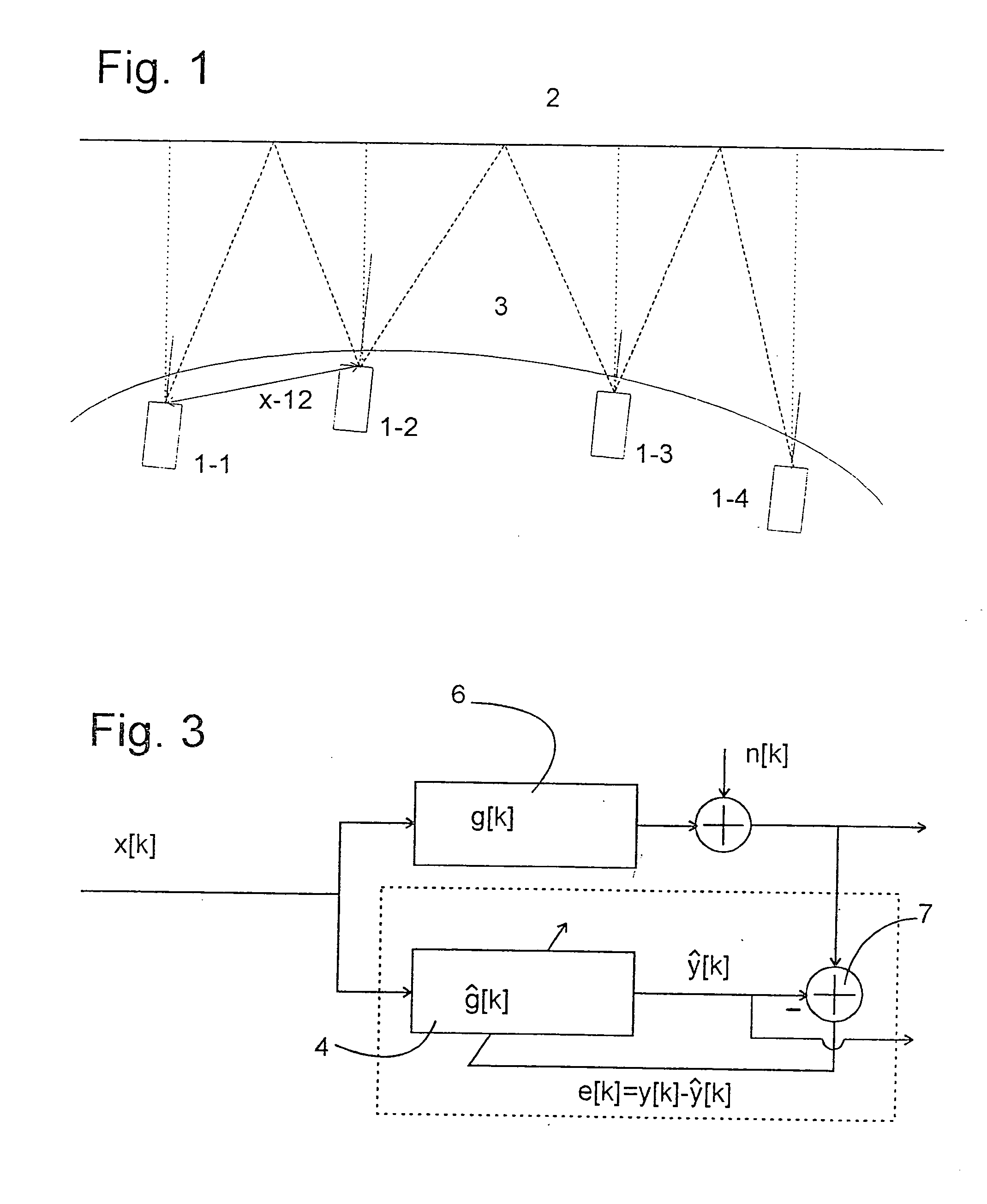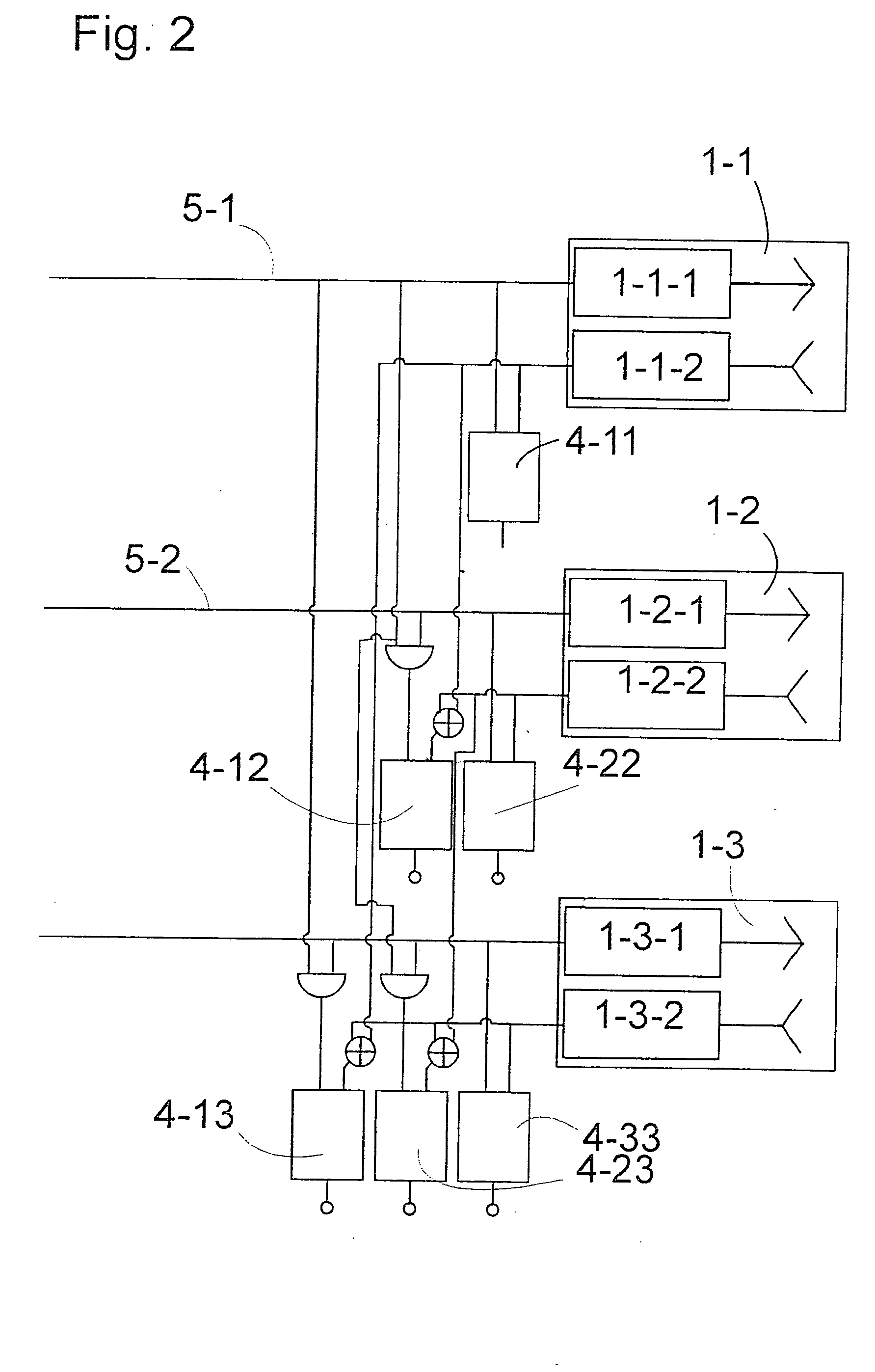Monitoring device and method using echo signals
a technology of monitoring device and echo signal, which is applied in the direction of measuring device, using reradiation, instruments, etc., can solve the problems of difficulty in ensuring the accuracy required for reliable measurements in positioning the transceiver uni
- Summary
- Abstract
- Description
- Claims
- Application Information
AI Technical Summary
Benefits of technology
Problems solved by technology
Method used
Image
Examples
Embodiment Construction
[0024]FIG. 1 shows a system of four transceiver units 1_1, 1_2, 1_3 and 1_4 of an echo-signal monitoring device with respect to a wall 2 representing a linear obstacle to be detected with the echo-signal monitoring device. The echo-signal monitoring device is built into a motor vehicle. The curved line along which transceiver units 1_1 through 1_4 are distributed may represent, for example, the curve of a bumper 3 of the vehicle, as seen from above.
[0025] Transceiver units 1_1 through 1_4 send pulse-shaped echo signals at points in time which are determined randomly by a control unit (not shown in the figure) and these signals are reflected by wall 2. A direct echo is reflected by the corresponding points on wall 2, whose surface normal intersects one of transceiver units 1_1, . . . , 1_4. Cross-echoes are reflected by points 2_ik on wall 2, where the angle of incidence of a signal pulse from transceiver unit 1_i is equal to the angle of reflection to unit 1_k. If T_ik denotes the ...
PUM
 Login to View More
Login to View More Abstract
Description
Claims
Application Information
 Login to View More
Login to View More - R&D
- Intellectual Property
- Life Sciences
- Materials
- Tech Scout
- Unparalleled Data Quality
- Higher Quality Content
- 60% Fewer Hallucinations
Browse by: Latest US Patents, China's latest patents, Technical Efficacy Thesaurus, Application Domain, Technology Topic, Popular Technical Reports.
© 2025 PatSnap. All rights reserved.Legal|Privacy policy|Modern Slavery Act Transparency Statement|Sitemap|About US| Contact US: help@patsnap.com



